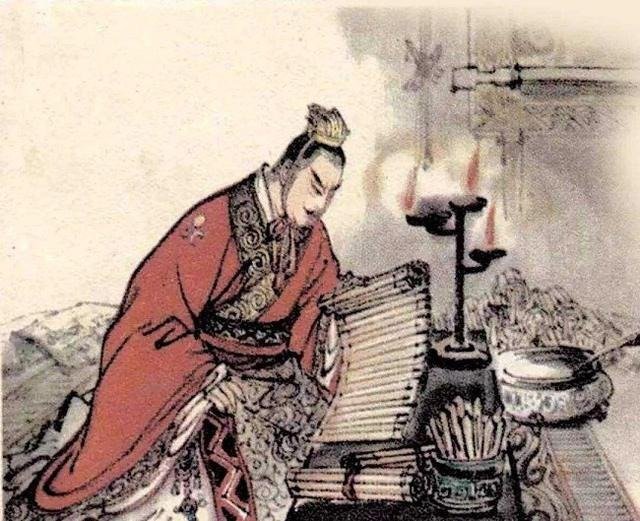
In the long history of Xi’an, the Xin Dynasty, despite its short – lived existence, left unique and profound marks as if a time – traveler had come out of nowhere and implemented a series of measures full of advanced thinking.
Wang Mang, the founder of the Xin Dynasty, was originally a powerful official at the end of the Western Han Dynasty. However, his actions seemed completely out of place in that era. In 9 AD, Wang Mang deposed Liu Ying, the Crown Prince, and proclaimed himself emperor in Chang’an (renamed Changan during the Xin Dynasty), establishing the Xin Dynasty.
Economic Reforms: Resembling the Transcendence of Modern Economic Concepts
In the economic field, the reform policies implemented by Wang Mang were highly modern – colored. The Wangtian System he introduced stipulated that all land in the country was owned by the state, called “Wangtian,” and private land sales were prohibited. He attempted to solve the serious problem of land annexation at the end of the Western Han Dynasty through this, enabling farmers to have land to cultivate and realizing a rational re – distribution of land resources. This was similar to the modern concept of land nationalization, which was truly astonishing when proposed more than two thousand years ago.
The “Wujun Liuguan” policy was even more amazing. Wujun officials were set up in six major cities including Chang’an and Luoyang. They were responsible for appraising prices, controlling market supply, handling loans, and collecting relevant taxes. When market goods were unsalable, the Wujun officials would purchase them at the original price; when prices rose too high, they would sell the goods at a fair price. While stabilizing prices, this also protected the interests of producers and consumers. For poor people, interest – free or low – interest loans were provided to help them overcome economic difficulties. “Liuguan” meant that the government took over six economic undertakings, including the monopoly of salt, iron, and wine, government coin – making, the collection of production taxes from mountains and swamps, and the handling of Wujun loans. This series of operations was very similar to the modern government’s macro – control of the economy, attempting to regulate commercial activities and stabilize the economic order through state power.
Political Reforms: A Bold Innovation of the Traditional System
Politically, Wang Mang also demonstrated bold attempts beyond his time. He implemented new policies modeled after the systems of the Zhou Dynasty, adopted the five – rank title system, and carefully divided titles into four grades and thirteen levels, namely “gong, qing, dafu, shi,” striving to build a more systematic and standardized bureaucratic hierarchical system. This was quite different from the relatively simple bureaucratic system of the Western Han Dynasty before, reflecting in – depth thinking on the innovation of the political system.
In terms of administrative divisions, Wang Mang combined the commandery – county system with the enfeoffment system, added state shepherds above the commandery – county system, hoping to integrate the advantages of the two systems and strengthen the central government’s control over local areas. Although this practice caused chaos in actual operation, from the perspective of innovative ideas, it had unique advanced nature.
Social Reforms: Shining with the Light of Human Rights and Equality
At the social level, Wang Mang’s reform of the slave system was also remarkable. He renamed slaves as “private dependents” and prohibited their buying and selling. This measure greatly shocked the social concepts of that time. In an era when slaves were regarded as private property, Wang Mang’s actions reflected a certain sense of human rights and equality, attempting to improve the living conditions of slaves and give them some dignity and status.
The Pity of the Xin Dynasty: The Collision between Advanced Ideas and Reality
However, these advanced reforms of Wang Mang were like planting modern seeds in ancient soil, and ultimately failed to bear fruit. Due to insufficient consideration of the actual social situation at that time, the policies faced numerous difficulties in implementation. For example, when appraising prices, only the prices at fixed time points were used as the basis, ignoring various influencing factors such as seasons, supply and demand, and natural disasters. As a result, the price appraisal was not scientific enough, and the market fell into chaos.
Coupled with improper employment, officials colluded with wealthy merchants and big businessmen, using their power to seek personal gain, distorting the original intention of the reform. At the end of the Western Han Dynasty, natural disasters and man – made disasters were frequent, and social unrest was rife. The management ability of the government was greatly weakened, all of which became obstacles to the implementation of the Xin Dynasty’s reforms.
Finally, in 23 AD, as the rebel army attacked and entered Chang’an, Wang Mang died in the war, marking the end of the Xin Dynasty. Although the Xin Dynasty was as short – lived as a meteor passing through the night sky, Wang Mang’s reform measures full of time – traveling colors became a unique and in – depth – exploring chapter in the history of Xi’an and even Chinese history, constantly triggering later generations’ thinking about history and innovation.
